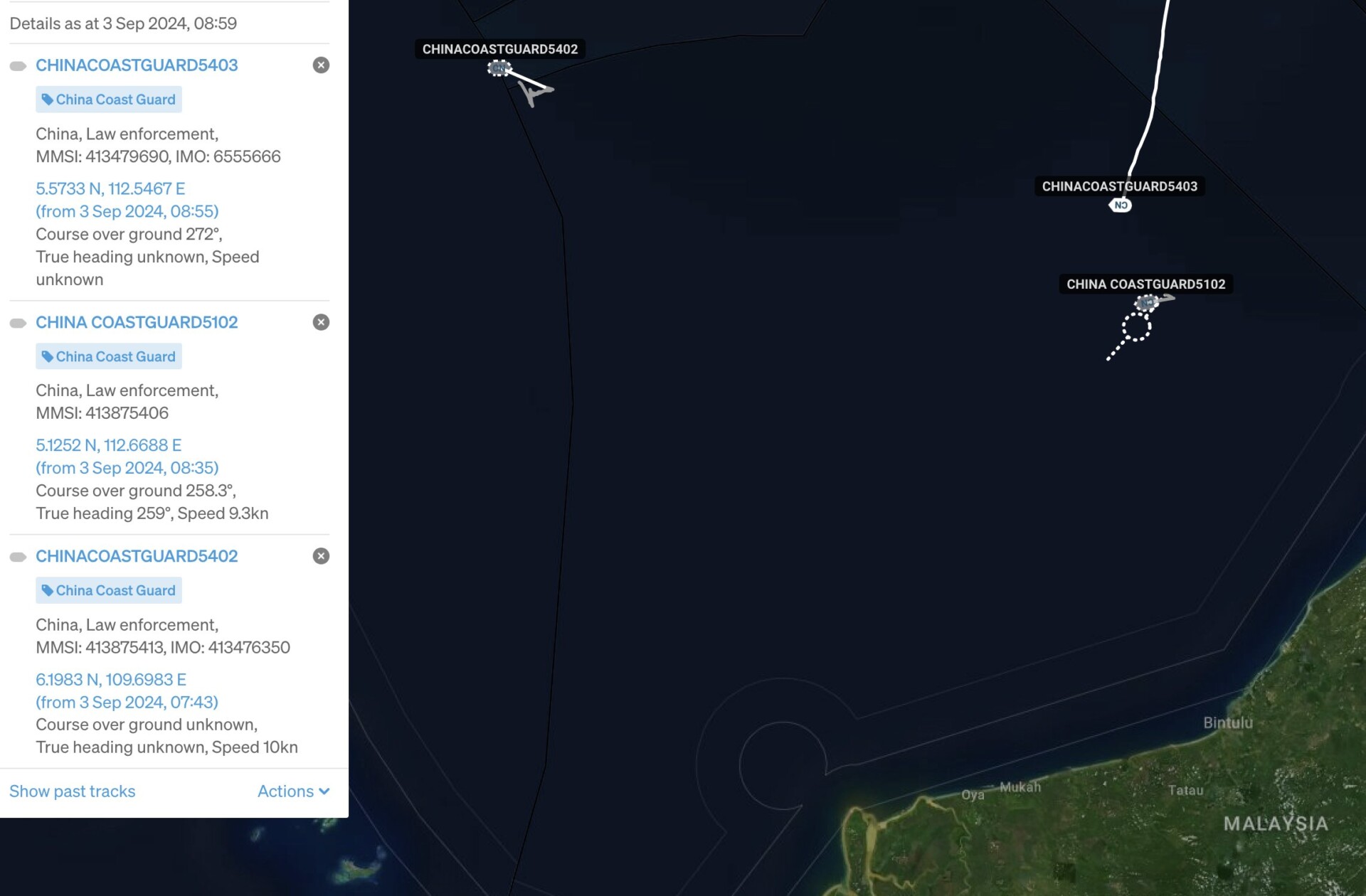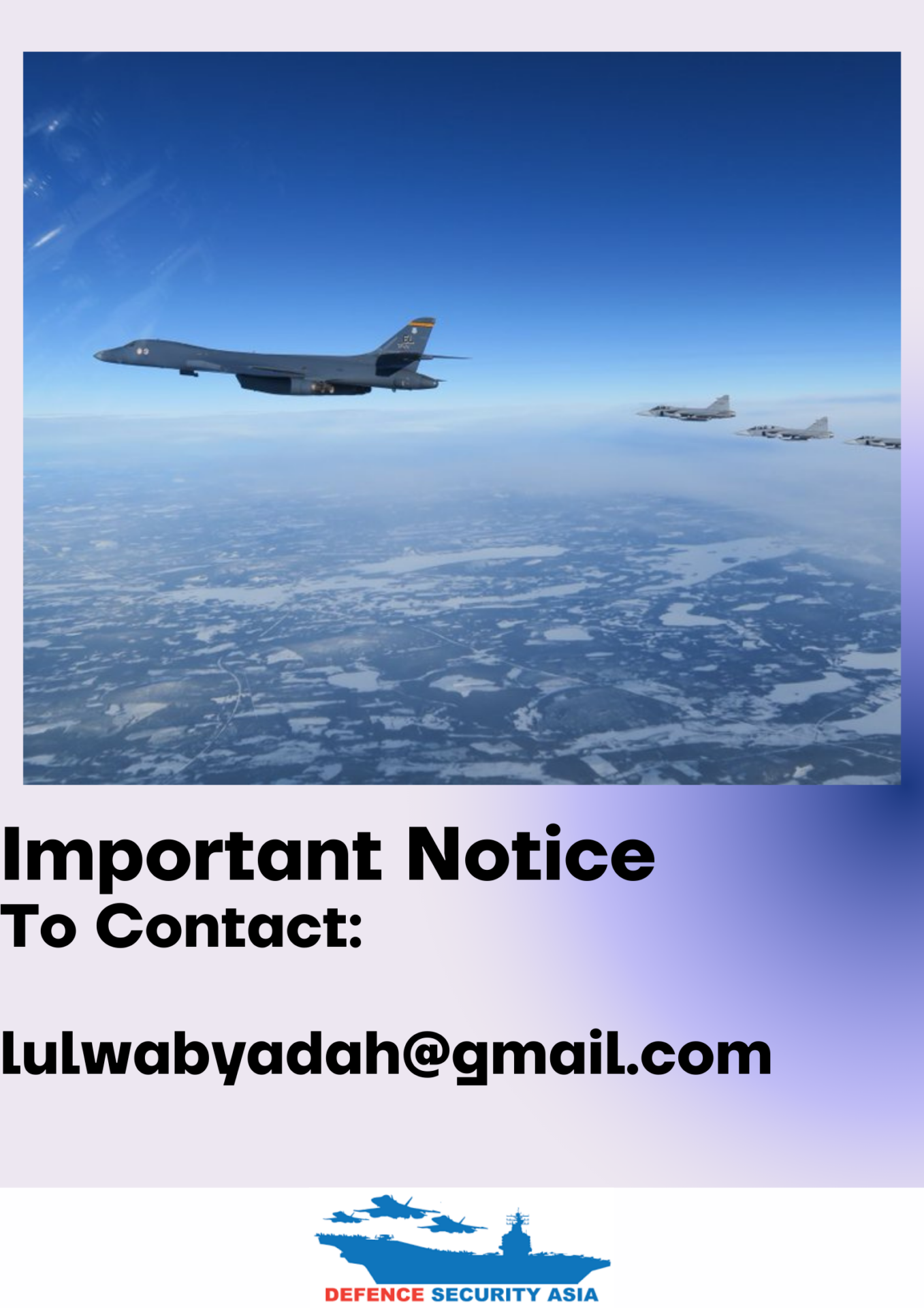Three Chinese Coast Guard Vessels Detected in Malaysia’s EEZ Waters
International maritime observer Ray Powell, in a post on the platform X (formerly known as Twitter), identified the three Chinese coast guard vessels detected within Malaysia's Exclusive Economic Zone (EEZ) in the South China Sea as CCG 5403, CCG 5102, and CCG 5402.
(DEFENCE SECURITY ASIA) – Three Chinese coast guard vessels were detected within Malaysia’s Exclusive Economic Zone (EEZ) waters this morning, according to international maritime observer Ray Powell.
In a post on the platform X (formerly known as Twitter), Powell identified the three Chinese coast guard vessels within Malaysia’s EEZ in the South China Sea as CCG 5403, CCG 5102, and CCG 5402.
Powell did not specify whether Malaysian patrol vessels were nearby, though it is common for patrol ships from the Royal Malaysian Navy (RMN) or the Malaysian Maritime Enforcement Agency (MMEA) to “shadow” the Chinese vessels.
Powell, a former U.S. Air Force colonel, leads the Myoushu Project at Stanford University’s Gordian Knot Center for National Security Innovation.
Vessel tracking data indicates that Chinese coast guard ships CCG 5403 and CCG 5102 are believed to be near the Kasawari gas development project, operated by Malaysia’s national oil and gas company, Petronas, in Block 316, which clearly falls within Malaysia’s EEZ.

Petronas Carigali, a wholly-owned subsidiary of Petronas, is responsible for the development and operation of the Kasawari Gas Field, estimated to be worth billions of ringgit.
Discovered in November 2011, the Kasawari Gas Field in Block SK316 off the coast of Sarawak in the South China Sea is estimated to hold approximately three trillion cubic feet (TCF) of extractable natural gas, which can be processed and commercialized.
The discovery of the Kasawari Gas Field by Petronas further cements Malaysia’s position as one of the world’s largest exporters of liquefied natural gas (LNG).
The mega gas field is expected to produce up to 900 million cubic feet of gas and 3.5 million barrels of condensate daily.
Gas extracted from the Kasawari Gas Field will be transported via pipeline for processing at the Petronas LNG Complex in Bintulu, Sarawak.


The Petronas LNG Complex in Bintulu comprises nine production trains with a total capacity of 29.3 million tonnes per annum (Mtpa), making it one of the largest LNG production facilities in the world.
The Kasawari Gas Field is located in the South China Sea off the coast of Sarawak, Malaysia, in waters with a depth of 108 meters, approximately 200km north of Bintulu, Sarawak, within Block SK316.
This mega gas field is situated near the Beting Patinggi Ali shoals, a region frequently visited by Chinese coast guard vessels.
According to the Asia Maritime Transparency Initiative (AMTI), Chinese coast guard vessels spent 316 out of 365 days in 2022 at the Beting Patinggi Ali shoals. – DSA



Comments are closed.